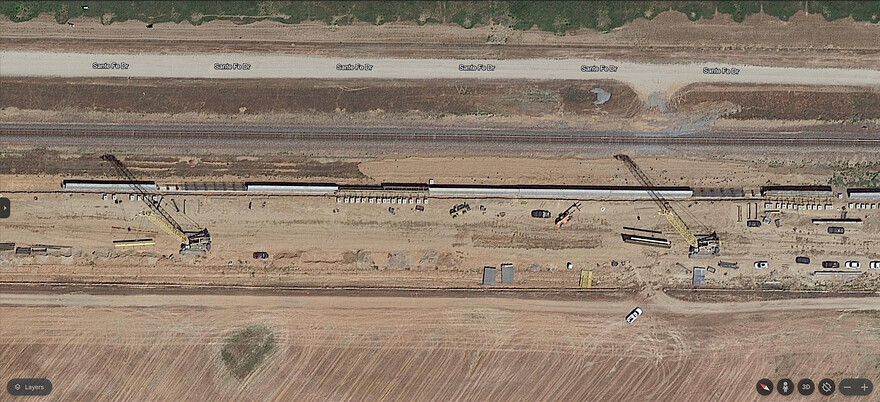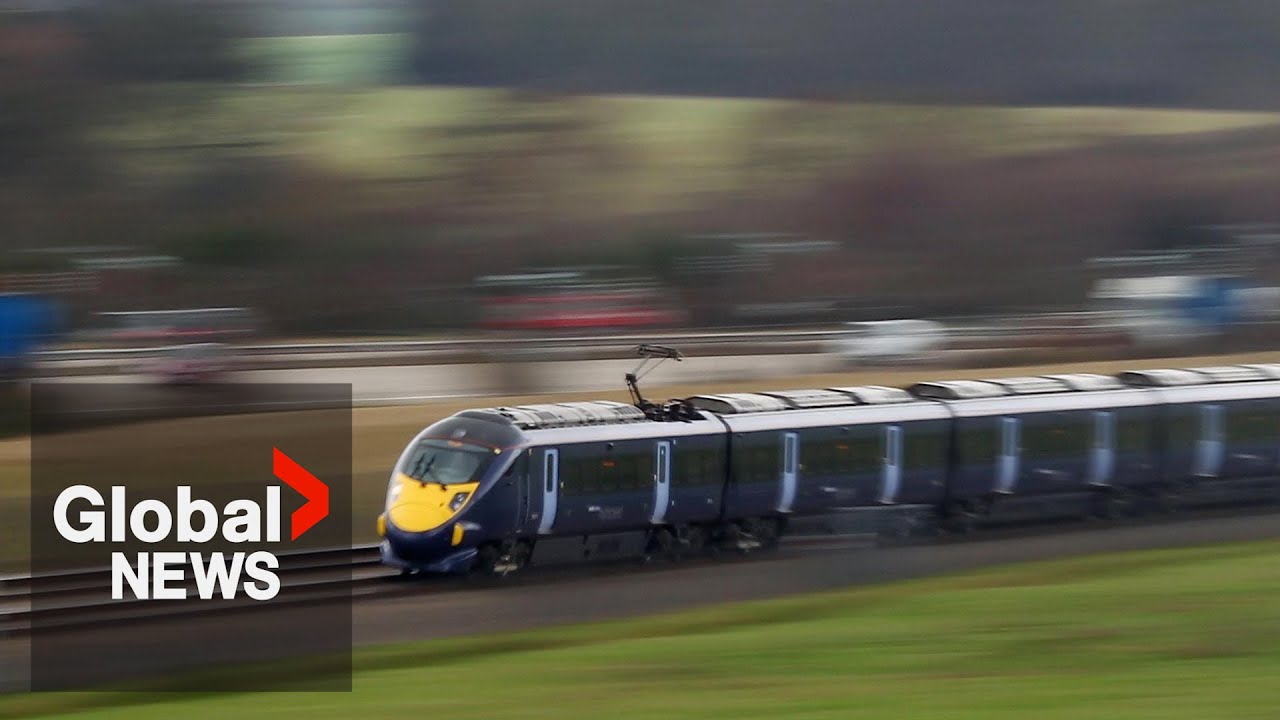Maintenant, combien volent entre ces paires?
En Ontario, la vaste majorité des routes qui vont nécessiter des viaducs sont localisé à proximités de Toronto et Peterborough ( assumant qu’on choisisse la route proposé par VIA ).
That zigzag is why I don’t see a compelling, urgent need for a HSL going into the heart of Laval. Build it on Notre Dame and de Souligny and cut 45 minutes! Everybody in Vaudreuil, the West Island, Chateauguay, and Longueuil – arguably a much larger population pool than the entirety of Laval – would necessarily need to go “somewhere else” to grab the train in either direction, so what makes Laval so special that we should spend extra billions, and sacrifice transit times, to serve it?
That would make losing out on the REM de l’Est’s downtown segment hurt even more ![]()
La subdivision Longue-Pointe est tellement sous utilisée, c’est plus que dommage qu’on ne vienne pas la développer avec littéralement n’importe quel projet. C’est le genre d’emprise qu’on devrait exproprier tout de suite pour du transport collectif. C’est assez large pour y mettre plus d’un mode en plus.
Exactement. À un moment donné, il faut cesser de se prosterner devant les râleurs et chiâleurs.
Pour rendre la liaison en train Montreal-Quebec viable il faut aussi un transport en commun plus fonctionnel dans la zone de Quebec metropolitain. Ce qu’on n’a pas presentement.
Alors oui un Tramway phase 2 dans la zone de Quebec serait souhaitable.
Something, something, the chicken or the egg.
Better intercity transit infra potentially means better outcomes for urban transit. Depending on what shape HxR takes, we could definitely see tram extensions getting fast track. Even a small city like Trois-Rivières could start to rationalize frequent bus lines, or even a modest commuter rail or tram-train service.
I think this is a classic case of anchoring bias, similar to how everyone assumed for decades the “Aerotrain” connecting YUL to downtown would run South along highway 20 until CDPQI surprised everyone with their “revolutionary” proposition to travel North along highway 40 and using the existing Doney spur. It was not on anyone’s radar, and the idea of a tunnel under YUL and the Technoparc was never entertained, just like a tunnel under HoMa to reach the rail corridor along Souligny/Victoria is not being considered. Frustrating, since arguably it would be technically much easier than tunnelling under a wetland and a functioning international airport…
Now that the “obvious” path through the Mont-Royal tunnel is no longer an option, we still stick (“anchor”) to the same general route as if it was set in stone. The initial idea was to use rail corridors capable of supporting two lanes dedicated to passenger rail, and the segment of the Saint-Jérôme line from Parc to Laval as well as the corridor going East through Laval are not critical for the freight industry. It also has the advantage of an additional correspondance with the metro at Concorde, which would effectively become a “Gare du Nord” for pretty much anyone north of the 40, with downtown being somewhat hard and long to reach from the North Shore and even from Laval, while Dorval station will provide decent service for the western suburbs. Therefore, this Laval corridor was seen as a low-hanging fruit when looking for a cheap dedicated corridor, even through it is somewhat less direct from a downtown to downtown point of view, and even if losing the tunnel makes reaching that “easy” route quite challenging (A. Billions for a new tunnel B. Elevated dedicated rails over the Adirondack subdivision C. Shittier service interacting with freight D. Did I miss an option?).
When the Mont-Royal tunnel was a possibility, it was probably the most cost-efficient route. Now that we need to circumvent the mountain, the cost-analysis has changed dramatically. I am not sure though what route you propose through downtown? A deep tunnel with a single station would still cost many billions…
J’imagine que tu parle de la voie que le CN utilise pour accéder au port et qui a un segment abandonné à Pointe-aux-Trembles. Sur la carte de RAC, ça fait partie de la subdivision St-Laurent qui comprend également tout les rails entre la gare de triage et Pointe-aux-Trembles.
Sur Open Street Map c’est désigné comme l’embranchement Longue-Pointe (et l’affichage du CN sur place le confirme aussi).
Mais oui selon la carte RAC c’est nominalement la subdivision Saint-Laurent. Mais cette carte est tout de même particulière en ce qui a trait à la subdivision Saint-Laurent; c’est pas mal un fourre-tout de plein d’embranchements disparates.
It was a surprise because the station was already built and is now use as a parking. Yes, everyone thought it was going to run alongside the 20, since there’s so much railways already there and a mere kilometer to the airport. I guess it was harder to negociate with either CN or CP to get access all day long to the rails.
As for the HSL, I wonder why not doing like some other courtries, building them on bridge all the way. Sure it costs more, but thats the better way to not cut the land in two. Or it could be possible to put them on the ground in the center on the 40 for most of the run, just like it was proposed for the TrensQuebec longtime ago. It would certainly be the best ads for the car owners, seeing a train passing them !
That would be way more expensive, and in the case of running along the 40, would impact train speed.
We’re looking at how to avoid having a short bridge every couple of kilometers. A continuous bridge would turn this into an unaffordable $100 billion projet. That only makes sense when you’re in an area with crossings every 300 m or less.
For running along the 40, you’d need to install continuous crash barriers along the right-of-way, and the corners, of which there are many, are designed for only 100-120 km/h. There is one section, between km 290 and 297, on the 40 where I see median running being useful.
Also, what happens to the train running along the 40 when there’s a mega accident involving, say, an oil tank truck that damages infrastructure and shuts down the highway for hours if not days or longer? Goodbye, redundancy!
Using highway ROW is not a bad idea, but not for the entire length of the highway, and certainly not in the case of highway 40… there is literally an existing railway that is super straight and barely used by freight a few kilometers north of it…
I wonder if costs could be decreased by using embankments rather than viaducts?
For reference, this is the California great wall. No kidding, this thing is absolutely massive. It has piles anchoring it into the ground every few feet The cars and cranes on the image give you a clue of just how massive it really is. That thing it at least 2 feet thick. Given just how much concrete is being poured into that wall and the anchoring piles, they are probably at least halfway to the quantity that would be required for a viaduct. It was built to prevent merchandise trains from intruding onto the HSR track. It runs north of Madera and is at least 5kms long.
Note: Google Earth has a new version and full screen does not seem to work with this new version, so I had to crop the top and bottom much more than I usually need to.
Couldn’t they just dig a big trench for that purpose ?
The amount of energy that a freight train has is incredible. Just consider just how large our highway medians are and you already have a clue of just how large a trench would have to be to stop a train. Mind you, as large as our highway medians are in the countryside, there are still some cases where trucks and cars do manage to end up on the other side after a crash.
Sur Global News (featuring @reecemartin)
What Canada can learn from the UK’s pricey high-speed rail project
British Prime Minister Rishi Sunak has scrapped another section of High Speed 2 (HS2).
It’s a planned high-speed rail line that was initially supposed to link London to northern England, but most of its development has been cancelled since construction began.
Redmond Shannon explains why Sunak is scaling back the project and what Canada, the only G7 country without high-speed rail, can learn from this.
Another part of it which wasn’t mentioned is the fact that large portions of HS2 are greenfield corridors. That also comes with added costs. Acquiring all of that land isn’t cheap.

